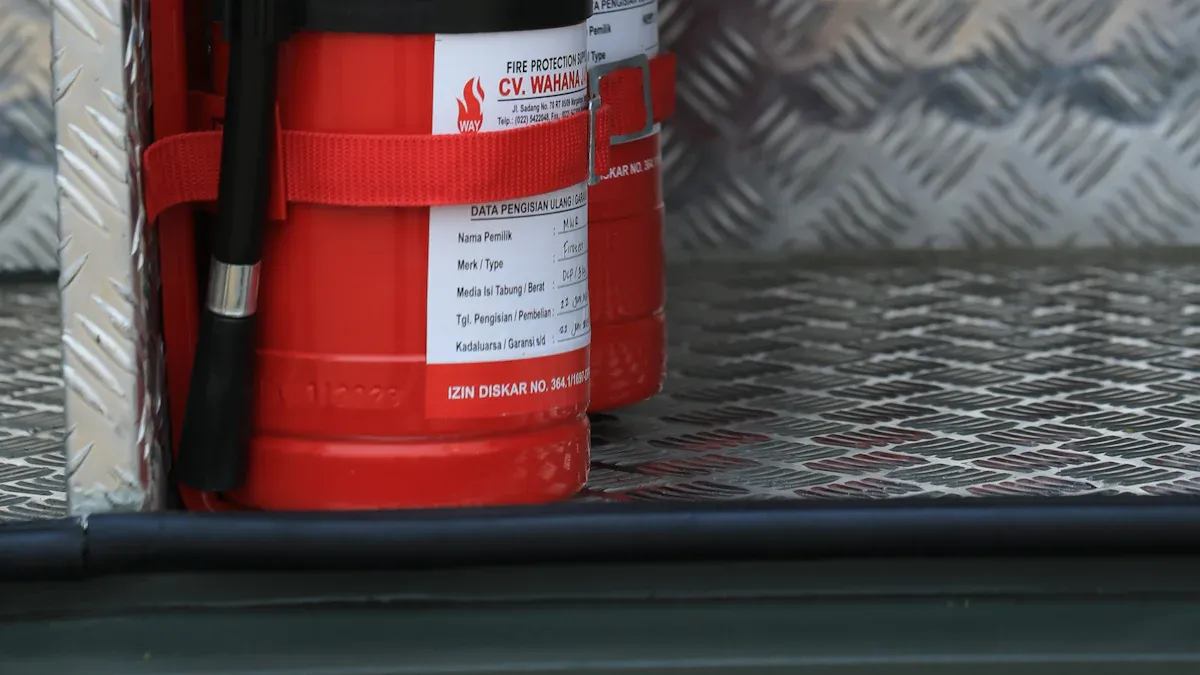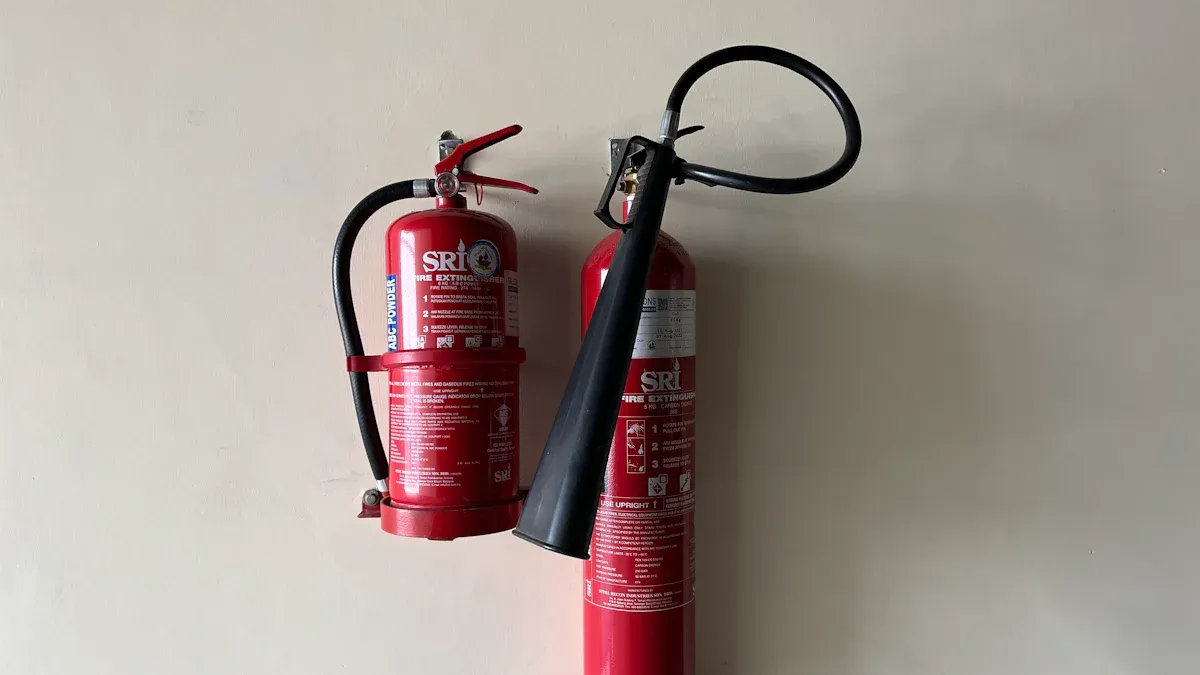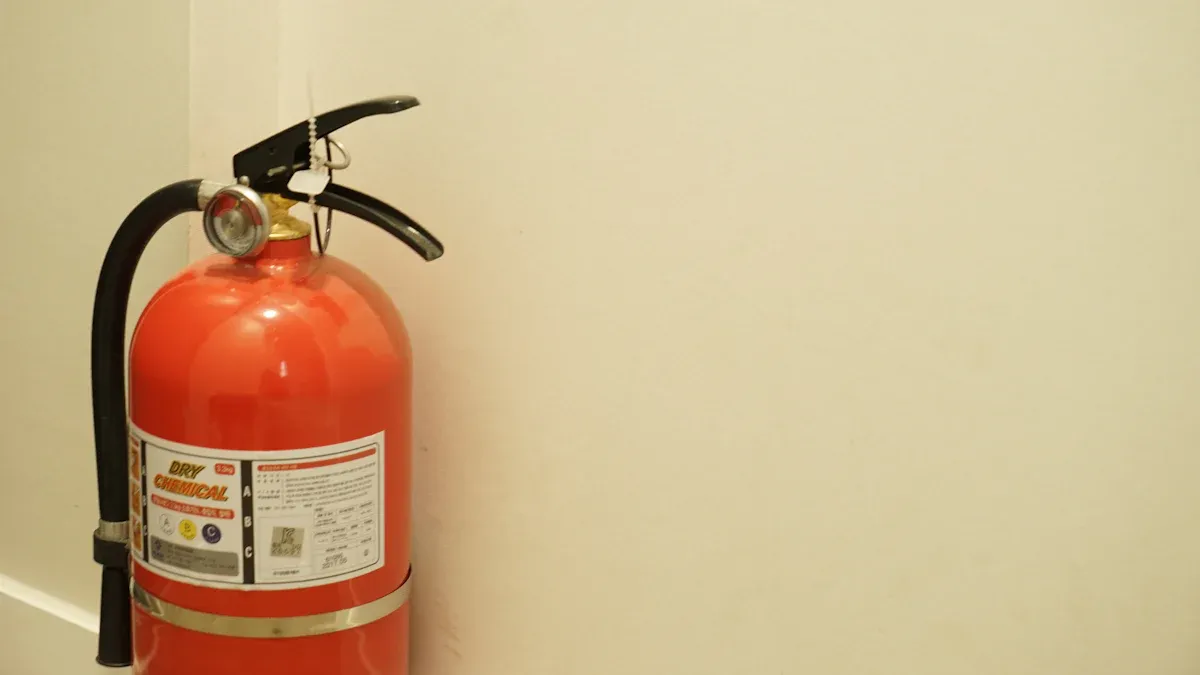
A Dry Powder Fire Extinguisher provides the best protection against combustible metal fires. Firefighters often choose this tool over a CO2 Fire Extinguisher when facing burning magnesium or lithium. Unlike a Portable Foam Inductor or a Mobile Foam Fire Extinguisher Trolley, this extinguisher stops flames quickly. Foam Branchpipe & Foam Inductor systems do not suit metal fires.
Key Takeaways
- Dry powder fire extinguishers are the best choice for fighting metal fires like magnesium and lithium because they quickly stop flames and prevent the fire from spreading.
- Only Class D dry powder extinguishers with special powders can safely put out metal fires; regular ABC extinguishers do not work and can be dangerous.
- Always identify the fire type, use the extinguisher correctly by aiming at the base, and follow safety steps to protect yourself and others during a metal fire emergency.
Dry Powder Fire Extinguisher and Combustible Metal Fires

What Are Combustible Metal Fires?
Combustible metal fires, also known as Class D fires, involve metals such as magnesium, titanium, sodium, and aluminum. These metals can ignite easily when in powder or chip form. Scientific research shows that metal powders react quickly to ignition sources like electric sparks or hot surfaces. The flame spread speed depends on the size of the metal particles and the airflow in the area. Nano-sized powders can burn even faster and pose higher risks.
Industrial incidents highlight the dangers of these fires. For example, in 2014, an aluminum dust explosion in China caused many deaths and injuries. Studies also show that dust fires happen often in factories, especially when fine metal particles mix with air and find an ignition source. Equipment like dust collectors and storage silos are common places for these fires to start. The rapid burning of metal dust can lead to explosions and severe damage.
Tip: Always identify the type of metal involved before choosing a fire extinguisher.
Why Dry Powder Fire Extinguishers Are Essential
A Dry Powder Fire Extinguisher is the best tool for fighting combustible metal fires. Technical reports from the Federal Aviation Administration show that sodium chloride dry powder extinguishers can put out magnesium fires much faster than liquid agents. In tests, sodium chloride stopped magnesium fires in about 102 seconds, which is twice as fast as some new liquid agents.
Comparative studies also reveal that composite dry powders, such as HM/DAP or EG/NaCl, work better than traditional powders or other extinguishing agents. These powders not only smother the flames but also help cool the burning metal and prevent reignition. The unique properties of dry powder make it the safest and most effective choice for handling dangerous metal fires.
Types and Operation of Dry Powder Fire Extinguisher

Types of Dry Powder Fire Extinguisher for Metal Fires
Specialist dry powder fire extinguishers are designed for Class D fires involving metals like magnesium, sodium, aluminum, and titanium. These fires are rare but dangerous because they burn at high temperatures and can spread quickly. Standard dry powder extinguishers, often labeled as ABC or dry chemical, do not work on metal fires unless they contain specialist powders. Only Class D powder extinguishers can safely handle these situations.
- Class D extinguishers use unique powders such as sodium chloride or copper-based agents.
- They are common in factories and workshops where metal cutting or grinding takes place.
- Legal and safety standards require these extinguishers to be accessible within 30 meters of metal fire hazards.
- Regular maintenance and clear signage help ensure readiness.
Note: Yuyao World Fire Fighting Equipment Factory manufactures a range of Class D dry powder fire extinguishers, meeting strict industry standards for safety and reliability.
How Dry Powder Fire Extinguisher Works on Metal Fires
A Dry Powder Fire Extinguisher for metal fires works by smothering the flames and cutting off the oxygen supply. The powder forms a barrier over the burning metal, absorbing heat and stopping the chemical reaction that fuels the fire. This method prevents the fire from spreading and reduces the risk of reignition. Standard extinguishers cannot achieve this effect, making specialist powders essential for safety.
| Type of Powder | Suitable Metals | Action Mechanism |
|---|---|---|
| Sodium Chloride | Magnesium, Sodium | Smothers and absorbs heat |
| Copper-based | Lithium | Forms heat-resistant crust |
Choosing the Right Dry Powder Fire Extinguisher
Selecting the correct Dry Powder Fire Extinguisher depends on the type of metal present and the work environment. Manufacturers label Class D extinguishers for specific metals, as UL ratings do not cover metal fires. Users should check the label for metal compatibility and ensure the extinguisher is easy to handle. Regular inspection and maintenance, as outlined by NFPA 10 and OSHA, keep extinguishers ready for use. Training employees on the PASS technique and keeping clear access to extinguishers are also best practices.
Post time: Jul-09-2025

